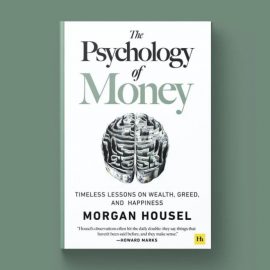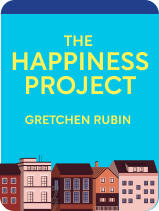

This article is an excerpt from the Shortform book guide to "A New Earth" by Eckhart Tolle. Shortform has the world's best summaries and analyses of books you should be reading.
Like this article? Sign up for a free trial here .
What is Eckhart Tolle’s A New Earth about? What is the key message to take away from the book?
In his book A New Earth, Eckhart Tolle argues that our ego-driven behaviors have reached a critical point—we must elevate our consciousness now for the survival of our species and planet. The book teaches how to do this: how to elevate their consciousness by becoming aware of their ego-driven thought and behavior patterns, and how to overcome those patterns.
Below is a brief overview of the key ideas.
The Root of Human Dysfunction
In his book A New Earth, Tolle asserts that humans are dysfunctional because our ego has an underlying fear of never being enough. To counter that fear, our ego drives us to inflate our self-image. The ego does this by collecting and identifying with material, thought, and emotional elements. The ego then compares these elements to others’, judging them as either better or worse—if it judges others’ elements to be worse, this enables the ego to feel superior to others.
Gaining elements alleviates the fear of being nothing because it gives the ego an identity—something to call “me,” “mine,” and “my story.” These elements and our social standing form the mental image most people conjure up when they think of the “self.”
Material Elements
Material elements are the physical things that we identify with,—typically our possessions and our physical body. For example, your clothing, hairstyle, and home tend to represent the image you see of yourself and how you want to be seen by others. We alter these physical elements based on the self-image we want to present.
Our ego constantly desires more and higher-quality material elements because of our need for superiority—there’ll always be someone with more than us, and this knowledge reignites our fear of being nothing. When we acquire “better” material elements, we lessen that fear. For example, this urge manifests itself as the need to dress in the newest trends or get rhinoplasty to fit the current beauty standard. You do these things to alter your image so your ego and other people see you as “good enough” or “better.”
This obsession with materials has led our consumer society and economy to a place where the only measure of success is having more, which has resulted in greed, pollution, and depletion of resources—one aspect of human dysfunction.
Thought Elements
Tolle explains that thought elements are the recurring thought patterns we identify with, such as the roles we play (like mother, customer, or employee) and the ideologies we believe in (like morals, values, and religions).
Our thought elements shape how we interact with the world and lead to two forms of human dysfunction:
1. Inauthentic relationships: Tolle argues that when we adhere to societal roles, we act based on what we think that role calls for rather than how we really feel. When that happens, our relationships can become artificial. For example, when we’re playing a parent role, we might act superior because we’re “the knowledgeable adult,” and we therefore might end up missing a more authentic emotional connection that our child needs. In extreme forms, role-based relationships can lead to human mistreatment like slave versus master, or in everyday forms, like an abusive boss and submissive employee. Ultimately, when we see another person as a label—a child, slave, employee, and so on—rather than a human being, our relationship with them is formed according to this label rather than how we feel toward them.
2. Polarization and violence: When we attach our self-image to ideologies like religious beliefs, we want to feel these beliefs are “right” (superior) for our ego to feel “enough.” Consequently, we insist that others who contradict our beliefs are “wrong” and will often resort to violence to assert this truth. For example, during the Crusades, Christians raped, tortured, and killed those of different spiritual beliefs to assert Christianity as “right.” Ultimately, when others fail to share our beliefs, morals, or values, we experience negative emotions like anger, frustration, and resentment—the underlying causes of human polarization and violence.
Emotional Elements
Tolle explains that our emotions—our bodies’ responses to our thought elements—also form our self-image. When we experience a recurring thought and consequent emotional reaction, it becomes part of our identity. In other words, our emotions aren’t caused by situations, but by the thoughts we have about the situation. And, the more strongly we identify with our thought elements (morals, values, and beliefs), the stronger our emotional reactions will be when things don’t meet our expectations.
Furthermore, each time we have a negative emotional reaction to a situation, it affirms the thought that caused the emotion. When the thought pattern is affirmed, we’re rewarded with a feeling of superiority for being “right,” and we will be more likely to experience the same thought and emotion in similar situations in the future.
For example, if we operate on the underlying thought element that no one’s trustworthy, we’re likely to interpret honest mistakes as deceit. If someone mistakenly takes our jacket thinking it’s theirs, we’re going to assume they were trying to steal it from us. Then, we will have an emotional reaction that affirms this belief—“they tried to steal my jacket and play it off as a mistake. I knew it, no one is trustworthy.” This will make us feel superior for being “right” and we will now be more likely to experience the same misinterpretation in the future.
The Pain-Body
Tolle explains that our emotional identity is housed in an energy form called the pain-body—the part of our mind that collects and stores all the negative emotional experiences we’ve had in our life. The pain-body collects these emotional experiences, and the next time a similar situation occurs, it reminds us of our previous negative thoughts and emotions and prompts us to react in the same way. This suffering ultimately strengthens the ego because it feeds on negativity.
The pain-body not only stores these emotions but also feeds off them. So, the more we experience negative emotions, the denser and more reactive the pain-body gets, and the bleaker our emotional identity and perception of the world become. Additionally, the denser the pain-body becomes, the more it craves further negativity to sustain itself, and thus the more it seeks out, recognizes, and creates negative thoughts and emotions.
Therefore, our pain-body causes dysfunction by trapping us in an endless cycle of suffering that affects us and those closest to us.
The Current State of Humanity
Tolle argues that humanity currently exists in a state he calls object consciousness—when our reality and priorities are entirely centered around enhancing our self-image. We’ll call this state mindlessness.
Unfortunately, despite the ego’s hard work, becoming superior to others won’t eliminate the fear of being nothing. This is because there will always be someone who has more or better elements than us. Therefore, the ego will always crave more elements to gain superiority, resulting in what Tolle calls the endless cycle of wanting—no matter what we have, we will always want more.
Tolle explains that because of this cycle, humans are only able to experience the present moment in one of three dysfunctional ways:
- As a bridge to a future moment. This is when the only value of the present moment is to reach something better in the future. This state makes us feel bored and discontent.
- For example, you may be enduring a business meeting by thinking about the dinner party you’re going to after.
- As a barrier or obligation. This is when we actively dislike what we’re doing, but we have to do it to get what we want. This results in impatience, frustration, and stress.
- For example, you hate your current job and dread it the entire day, but you do it anyway because it’s the only way to make an income and get a better job in the future.
- As an antagonist. This is the worst state to be in—when we see our reality as inherently evil and against us. This state most commonly results from negative thoughts provided by our pain-body, like “nothing good ever happens to me,” and results in the emotional reactions that cause us to see the present as an enemy.
- For example, you wake up with a dead phone, miss the bus to work, and forget your lunch at home, all while fuming and complaining that it’s “just my luck because nothing good ever happens to me.” You consequently feel anger and resentment towards life.
When we’re unable to be mentally present because we’re consumed with wanting, our ego can control our thinking and behavior, trapping us in a dysfunctional state of mindlessness. Tolle argues that the only way to escape this state is to evolve our consciousness to a higher level—one where we are present in each moment rather than constantly wanting. He calls this state being or presence, but we’ll refer to it as mindfulness.
The Inner Self
Tolle asserts that the key to achieving a state of perpetual mindfulness is to connect with our inner self, rather than the false self-image created by our ego. When we’re connected with our inner self, we’re always in a state of mindfulness.
Tolle explains that our inner self is pure conscious energy, the same sophisticated energy that created the functional universe we live in. It’s the force that directs planets to rotate around stars and galaxies to rotate around a center mass—an order that allows for life to exist.
This energy lives inside all things and guides their survival—plants that photosynthesize to live; animals that survive by their instincts; and humans, who are conscious of their own consciousness. He argues that this sophisticated energy specifically created humans to have this heightened consciousness so that it can experience itself through the human form—so consciousness itself could experience consciousness. Becoming one with this consciousness, or our inner self, is the purpose of human life, Tolle argues.
The Consciousness Evolution
Tolle explains that when we connect with our inner self and live in a state of mindfulness, we will live in a state of non-attachment, nonjudgment, and nonresistance, which will allow us to break free from the ego’s control.
When we no longer form attachments to material, thought, and emotional elements, we’ll no longer generate greed, consumerism, and pollution caused by the endless cycle of wanting.
When we no longer judge things as “right and wrong” or “good and bad,” we’ll no longer have unrealistic expectations that cause disappointment, anger, resentment, and other forms of suffering.
Consequently, we’ll cease resisting what simply is and cannot be changed. Tolle notes that nothing in the world is inherently good or bad, it’s only our judgments of them that make them so. We’ll no longer feel the stress, greed, envy, and negativity supplied by the ego because we no longer crave external validation. We will only feel peace.
If the bulk of humanity dedicates itself to achieving this state of mindfulness, Tolle asserts that the violence and destruction caused by the collective human ego will cease.
Luckily, Tolle explains that a human evolution to this evolved state of consciousness is possible and has been underway for thousands of years. He argues that the first sparks of the consciousness evolution were the ancient spiritual teachers like Buddha, Jesus, and Lao Tzu.
These teachers and their respective religions all preached the same two-fold fundamental truth that is the basis of Tolle’s argument: (1) The normal state of the human mind is inherently dysfunctional, and (2) a radical transformation of human consciousness to overcome this dysfunction is possible and necessary, and it’s the purpose of human life.
Hinduism, Christianity, and Buddhism refer to inherent human dysfunction, respectively, as maya, original sin, and dukkha. They all view the transformation of consciousness as the solution to this innate dysfunction, and they refer to it, respectively, as enlightenment, salvation, and the end of suffering.
The teachers who founded these religions embodied the evolved state of consciousness that the rest of humanity needs to achieve, and they encouraged others to evolve through their teachings.
The Critical Point of the Evolution Is Now
Tolle explains that evolutions happen over time—they start with minor changes, or “sparks” like the ones described above, and they eventually reach a critical point where mass change is necessary for the survival of the species. Tolle argues that now is the critical point in the evolution of human consciousness—mass change is necessary today for the survival of humankind and the planet.
This is because our destructive ability (caused by our ego) is intensifying at an unsustainable rate due to advances in technology. Tolle explains that while wars have always happened, we’re now able to kill and destroy with alarming efficiency due to advanced weapons. Furthermore, the development of technologies has allowed us to destroy most of our forests and the habitats of innumerable plants and animals. We torture animals in factory farms and poison rivers, oceans, and the air.
If we’re unable to evolve out of the mindless ego-driven state of consciousness that causes this destruction, we’ll end up killing our species and destroying the planet.
A New Earth: Achieving the Evolved State of Consciousness
Tolle explains that when humanity collectively reaches a perpetual state of mindfulness and breaks free from the ego’s control, enjoyment will become the motivating force behind people’s actions rather than wanting. And if we don’t particularly enjoy what’s happening, we can at least accept it without resistance and negative thoughts. Consequently, human dysfunction will end.
How to Attain a State of Mindfulness
Tolle offers five suggestions for how to live with non-attachment, nonjudgment, and nonresistance and ultimately achieve a state of mindfulness.
- Recognize and ignore the compulsions of the ego that strengthen it: The ego compels us to strengthen our identity and reach for superiority. So, resist the urge to do things like express your opinion when it’s not asked for or needed; demand recognition; make unnecessary requests; have strong expectations of people; or try to make an impression through your beliefs, knowledge, or looks. These are the compulsions of your ego.
- Detach from the thoughts and emotions of your pain-body: When we get upset over things like disrespect, lack of attention, or other people’s behavior, we cause ourselves unnecessary misery and strengthen our pain-body, making ourselves more prone to these reactions in the future. When you recognize these thoughts and emotions cropping up, detach yourself from them and acknowledge that they’re not you, but rather the pain-body trying to bring you down. With repetition, it will become easier to separate yourself from these negativities.
- When someone damages your ego (they accuse, blame, disrespect you, and so on) don’t fight it with a reaction or response—let it happen. Your ego reacts to these offenses as a restoration tactic. But when you don’t react—when you stop defending your “self”—you’ll stop identifying with your ego and strengthen your connection to your inner self.
- Focus on your breathing and take a break from thinking. When you focus all your attention on breathing and feeling your body, you become grounded in mindfulness and the present moment. This is a form of meditation. This will make you aware of the gap between your thinking mind, which is the voice of your ego, and your inner self, which will allow you to feel the conscious energy that flows through every part of your body. You are not your body or your mind, you are the conscious energy within it.
- Do every single thing in a state of either acceptance, enjoyment, or enthusiasm. You can’t always be joyful or enthusiastic about things you have to do, like cleaning or working, but you can accept them by simply living in the present moment. If you just accept what’s happening right now without seeing it as a bridge, a barrier, or an antagonist, there’s no room for negative thoughts and emotions, only mindfulness and peace.

———End of Preview———
Like what you just read? Read the rest of the world's best book summary and analysis of Eckhart Tolle's "A New Earth" at Shortform .
Here's what you'll find in our full A New Earth summary :
- Eckhart Tolle's guide on how to evaluate your consciousness
- How to overcome ego-driven thoughts and behaviors
- Why humanity must undergo an evolution of consciousness






